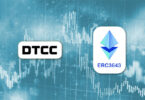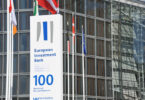Today HSBC Singapore said it had executed a letter of credit using distributed ledger technology. The trade finance transaction was for a shipment of soya beans from Argentina to Malaysia for food & agriculture conglomerate Cargill. HSBC issued a letter of credit to ING using R3’s Corda technology.
Letters of credit make up roughly 40 percent of trade finance products. But the proportion of has been declining as fintech companies offer competing products which are quicker.
The bank explained that conventional exchanges for paper-based documentation usually take 5-10 days, whereas in this case, the exchange was in 24 hours.
“What this means for businesses is that trade finance transactions have been made simpler, faster, more transparent and more secure,” said Vivek Ramachandran, HSBC’s head of growth and innovation.
“The need for paper reconciliation is removed because all parties are linked on the platform and updates are instantaneous. The quick turnaround could mean unlocking liquidity for businesses.”
The UN estimated that digitizing the Asia-Pacific regions’ trade paperwork could cut costs by up to 31% and boost exports by $257 bn a year.
Conventional v blockchain
Currently, physical documents are sent to each party using post, courier, and fax. The documents outline the goods and payment amount. A letter of credit is a promise that the buyer’s bank will pay for the products when the customer receives them, even if the customer is unable to. Typically the process takes five to ten days. This transaction took two days to complete.
In the blockchain information is recorded on the shared ledger with each party holding a copy of the data relevant to them. As each party updates the data, it is available in real time. The benefits for trade is it creates a single source record of the transaction including the goods description, cost, and legal requirements.
Alternative letter of credit platforms
In July last year, Chinese bank CITIC announced the creation of a blockchain system called BCLC in conjunction with Minsheng Bank. They system uses Hyperledger Fabric.
In November last year, Spanish bank BBVA executed a transaction with Mexican counterpart Bancomer. This transaction was a pilot using the Wave platform.
Going forward
There are currently twelve banks supporting the application. The other ten banks are: BNP Paribas, Bangkok Bank, CTBC Bank, Intesa Sanpaolo, Mizuho Bank, Natixis, Royal Bank of Scotland, Scotia Bank, SEB, and US Bank.
The group are welcoming other banks to join the network to drive industry adoption.






